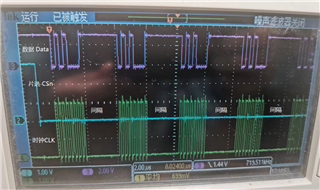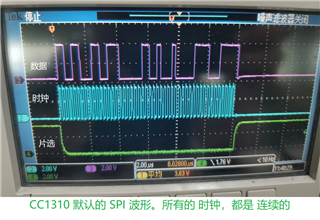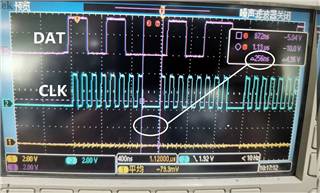Hi team,
Here's an issue from the customer may need your help:
Call the SPI function library directly and modify the minDmaTransferSize to 1. If 5 bytes are written at a time, the oscilloscope shows 8*5 consecutive clock pulses with a CSN low (no interval, better SPI efficiency)
However, there is one device in the customer's actual circuit. When the device writes 5 bytes to it using SPI, it required to be separated by at least 2 every 8-tap clock before transmitting the next set of 8-tap clocks.
The customer would like to know how to increase this interval by modifying the SDK.
The oscilloscope waveform after implementation looks like the following picture:

Could you help check this case? Thanks.
Best Regards,
Cherry




